Native Plants for West Michigan Pollinators
By Maleah Rakestraw, ASLA
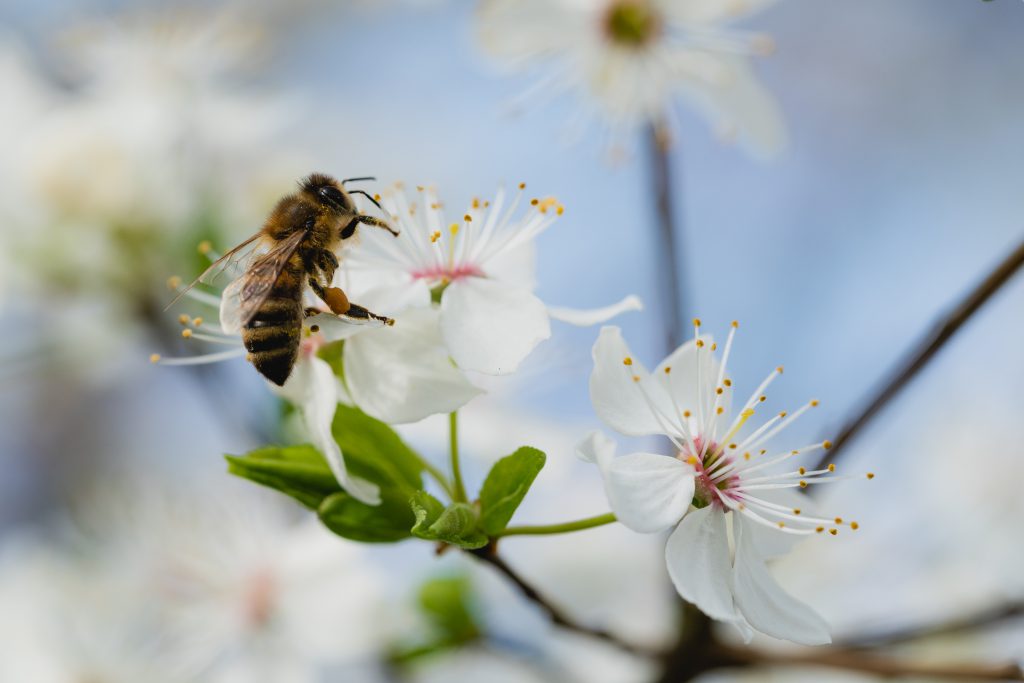
“Save the bees!” is a common mantra chanted by gardeners all across the great state of Michigan. According to Michigan State University’s Michigan Pollinator Initiative, there are over 450 different species of bees in the state. The importance of sustaining bee populations is not lost on the average Michigander, but providing a safe haven and continuous source of food throughout the frost-free months for both bees and other pollinators is an area that can sometimes be overlooked.
The European Honey Bee (Apis mellifera) is the primary bee used in pollination of agricultural crops, and other native bees or beneficial pollinating insects play a big part in the proliferation of native vegetation. Beetles, butterflies, bats, moths and flies are all excellent pollinators who have coevolved with particular species and are attracted to flowers with varying colors, scents, sizes and shapes. Beetles are one of the oldest known pollinators. Both they and flies prefer strongly fruity, bowl shaped flowers like aster and butterfly weed. Butterflies on the other hand are adapted to flowers with large petals which act as a landing platform and brightly colored blooms. Moths and bats primarily feed at night and are attracted to night blooming and light-colored flowers, like yucca or honeysuckle, which stand out in the darkness.
It’s no secret that native plants support native pollinator populations. Knowing the specificity of plants needed to support the diverse pollinators present in West Michigan, we can wield the available tools and knowledge to help the proliferation of these beneficial insects in our own backyards. The following slideshows present a short list of landscape plants native to West Michigan which can provide food from spring through fall for our pollinating pals.
Early Spring
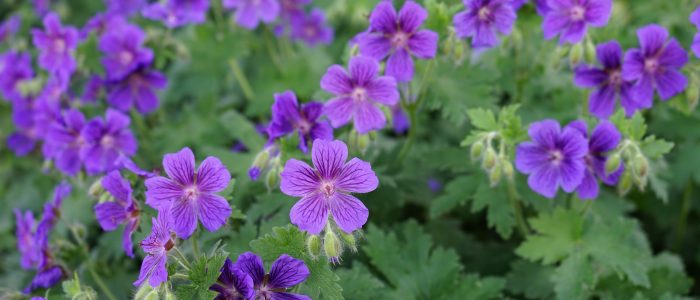 Wild Geranium (Geranium maculatum)
Wild Geranium (Geranium maculatum)
Wild Geranium is a perennial with attractive purple blooms from April to May. This one to two foot tall plant likes sun and can withstand partial shade, moist soils, and looks fabulous as a border planting or in a woodland garden.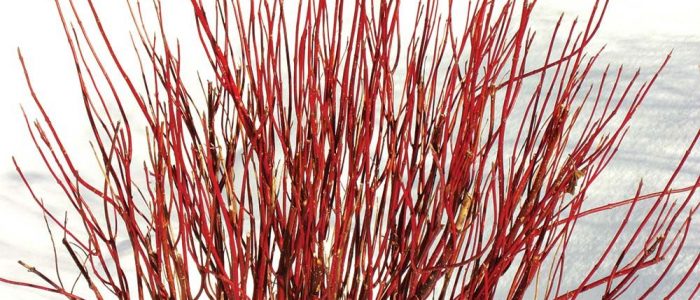 Red Osier Dogwood (Cornus sericea)
Red Osier Dogwood (Cornus sericea)
This perennial shrub is a plant for all seasons, featuring snow-ball like blooms in spring, lush green foliage and bluish-white berries in summer, red to orange fall color, and vivid red stems in winter. Although it can be planted in medium to moist soils, Red Osier Dogwood loves water and makes a perfect addition to any raingarden.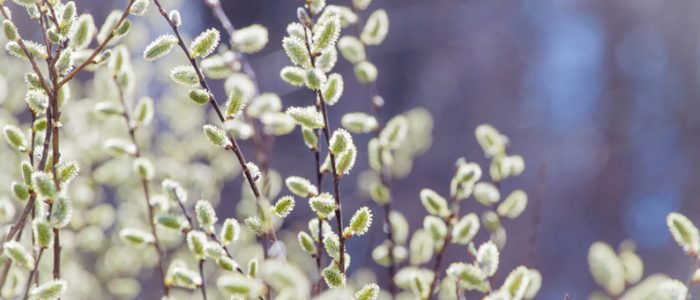 Pussy Willow (Salix discolor)
Pussy Willow (Salix discolor)
Deer resistant and tolerant of wet soils, the Pussy Willow is a large shrub that can give height and structure to the garden. Known for its soft white catkins, the Male plants produce a showy winter display good for both cut-stems or garden interest.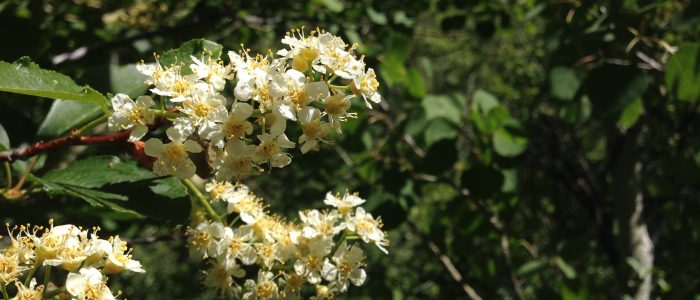 Chokecherry (Prunus virginiana)
Chokecherry (Prunus virginiana)
With long panicles of white flowers in early spring and messy purple berries in the summer, the Chokecherry tree is a good source of food for pollinators and birds. Although the straight species is not commonly present in the landscape industry, the showier purple leaved varieties are likely to be found in a nursery near you.
Spring
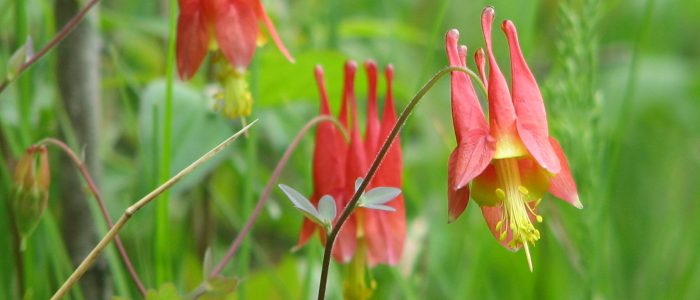 Columbine (Aquilegia canadensis)
Columbine (Aquilegia canadensis)
The red bell-shaped flowers of the Columbine are a site to see in the April and May. Hardy and drought tolerant, these vibrant perennials are a favorite of humming birds and can pack a punch of color in your spring garden.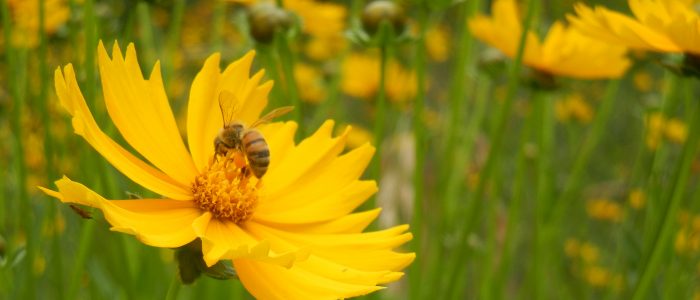 Lanceleaf Coreopsis (Coreopsis lanceolata)
Lanceleaf Coreopsis (Coreopsis lanceolata)
Lanceleaf Coreopsis is a type of tickweed that blooms from May to June. It’s hardy, sun loving, and drought tolerant nature make it a favorite for full sun gardens where it has the opportunity to spread. Divide this plant every two to three years to maximize the bright yellow blooms for many years to come.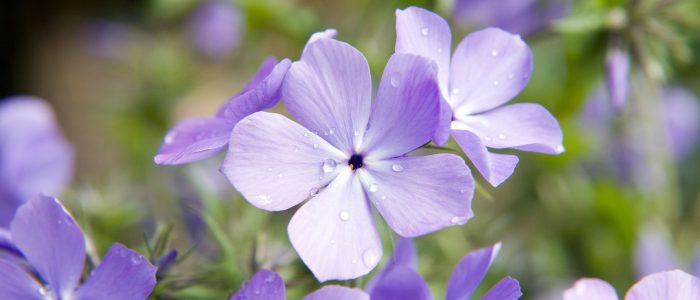 Wild Blue Phlox (Phlox divaricata)
Wild Blue Phlox (Phlox divaricata)
Forming mats of medium green foliage, the Wild Blue Phlox is a perfect groundcover for shady areas. With pastel blue and purple blooms emerging in spring, the flowers bring a fragrance to the landscape which will not go unnoticed.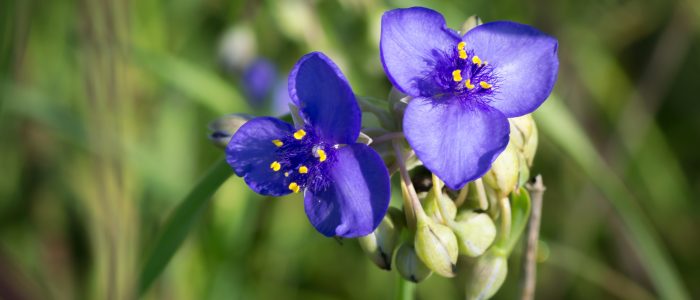 Ohio Spiderwort (Tradescantia ohiensis)
Ohio Spiderwort (Tradescantia ohiensis)
Aside from its inferior namesake, the Ohio Spiderwort is a Michigan native through and through. If planted in full sun, purple-blue flowers are born in May and persist into early summer, and may even re-emerge in fall if this perennial cut back to six to twelve inches in mid-summer.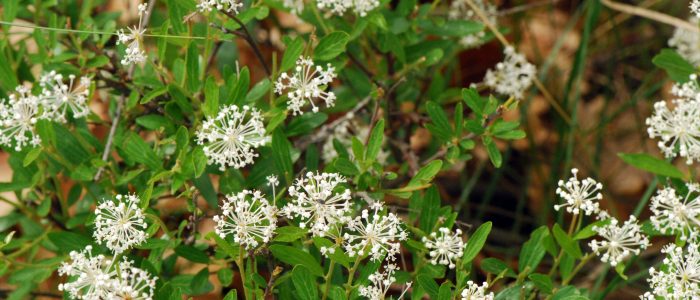 New Jersey Tea (Ceanothus americanus)
New Jersey Tea (Ceanothus americanus)
This small, compact shrub is a champion at cultivating difficult areas such as dry sites or along steep slopes. Adaptive to many soil conditions, the New Jersey Tea can be found from Canada all the way south to Florida. This perennial shrub bears clusters of small white flowers from May through July.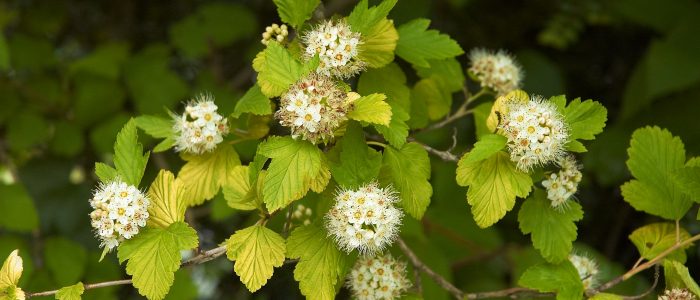 Common Ninebark (Physocarpus opulifolius)
Common Ninebark (Physocarpus opulifolius)
Ninebark is a popular native landscape shrub found in many gardens across the state. Low maintenance and hardy, these large woody shrubs are known to tolerate drought and poor soil conditions. Many colorful varieties of this species have been cultivated, and its large size and unique branch structure make it a favorite among gardeners to plant as a foliage backdrop or a hedge massing.
Summer
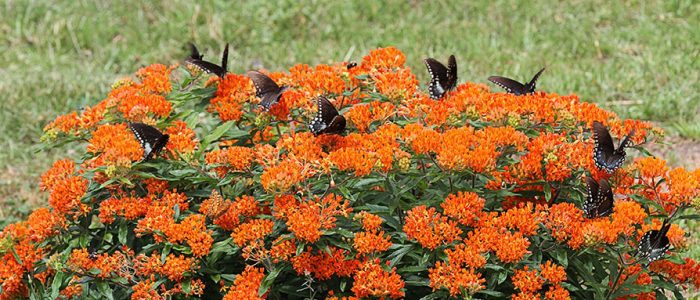 Butterfly Weed (Asclepias tuberosa)
Butterfly Weed (Asclepias tuberosa)
One of the most impressive native wildflowers, Butterfly Weed has dense, bright orange blooms all summer long. This showstopping perennial is a low maintenance plant that has adapted to dry soils. Monarch caterpillars enjoy munching on the Butterfly Weed leaves, while a myriad of pollinators, including bees, butterflies, and humming birds, are attracted to its nectar.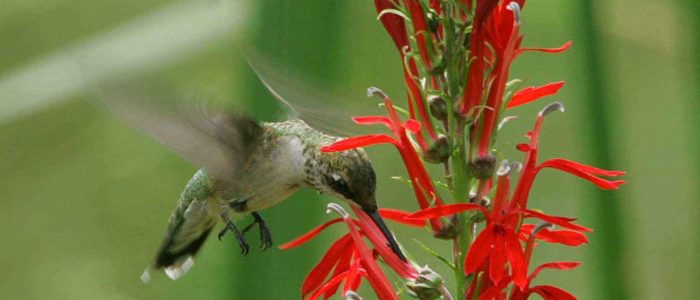 Cardinal Flower (Lobelia cardinalis)
Cardinal Flower (Lobelia cardinalis)
The long-lasting flowers of the Cardinal Flower pop up mid-summer and can last all the way through September. This tall perennial tolerates wet soils, and is an excellent addition to any West Michigan rain garden or pond edge. The bright red blooms are truly eye catching and attract both humming birds and butterflies.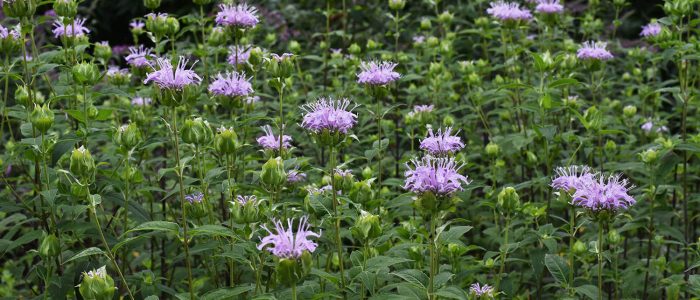 Bergamot (Monarda fistulosa)
Bergamot (Monarda fistulosa)
Bergamot is a herbaceous perennial that provides contrast and color from mid to late summer. As a native to Michigan meadows, the Bergamot flowers are a favorite of bees and butterflies. The pinkish-purple flowers sit atop tall stems and are very attractive when intermixed with other low prairie plantings.
Late Summer & Fall
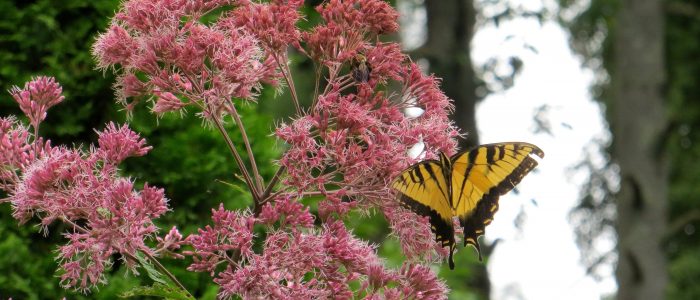 Sweet Joe Pye Weed (Eupatorium purpureum)
Sweet Joe Pye Weed (Eupatorium purpureum)
With grand architectural height, the Joe Pye Weed looms over most garden variety plants. Reaching up to seven feet in full bloom, this plant provides structure and elegance in any garden setting. Mauve flowers emerge in July and persist through September. For best results, plant in massing so stalks may have support of one another throughout the growing season.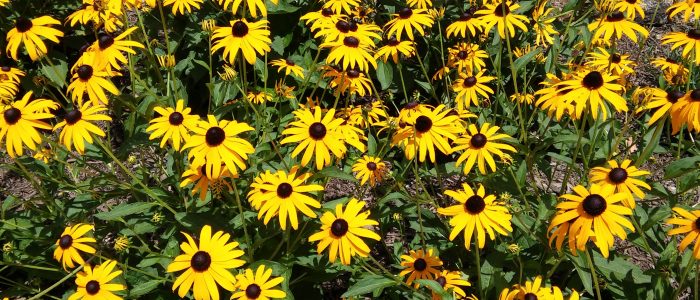 Black Eyed Susan (Rudbeckia hirta)
Black Eyed Susan (Rudbeckia hirta)
Black Eyed Susan is a self-seeding biennial or short-lived perennial native to the meadows of West Michigan. This sun loving, common native is perfect for both garden beds or naturalized areas. The late summer months bring out the Black Eyed Susan’s bright yellow flowers, which are perfect as cut stems and can last well into September.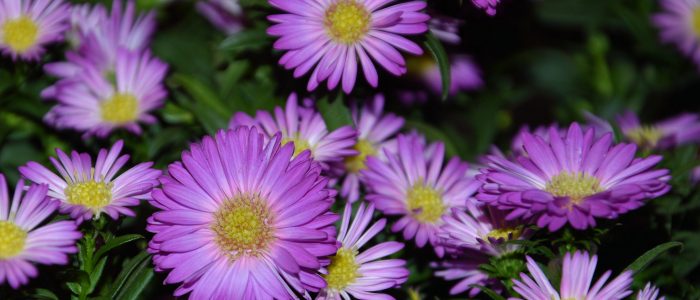 New England Aster (Aster novae-angliae / Symphyotrichum novae-angliae)
New England Aster (Aster novae-angliae / Symphyotrichum novae-angliae)
With late summer in West Michigan comes the show of the New England Asters. The blue-purple daisy like flowers cover each plant’s stiff upright stalks, and are a welcome contrast to the golds and yellows of the fading fall foliage. Although the straight species can be quite tall, smaller, more compact varieties are commonly sold in the landscape industry.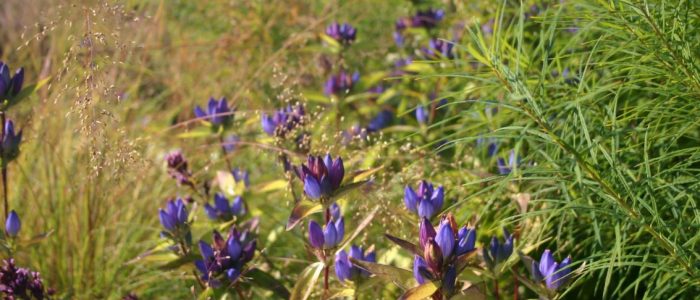 Bottle Gentian (Gentiana andrewsii)
Bottle Gentian (Gentiana andrewsii)
Bottle Gentian may be a unique specimen addition to the garden, but it’s distinctive closed blue flower and interesting backstory make it worth the wait. This plant is slow growing but long lived and grows best in part shade and rich, cool, humusy soil. Bumblebees are its primary pollinator, as they are one of the few insects strong enough to open its blooms.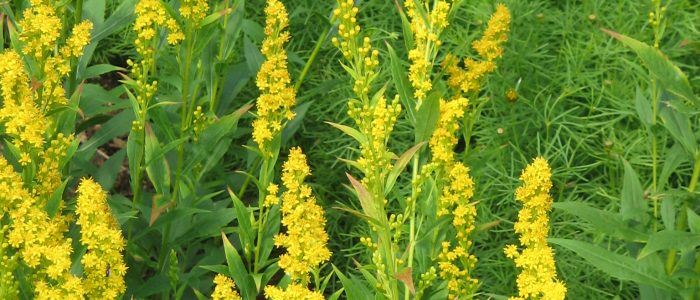 Blue Stemmed Goldenrod (Solidago caesia)
Blue Stemmed Goldenrod (Solidago caesia)
Unike its cousin Solidago canadensis, Blue Stemmed Goldenrod is a non-aggressive spreading perennial with long rays full of yellow flowers. This West Michigan native is low maintenance and hardy. Goldenrod pollen is a key protein source for honey bees in the fall and the flowers provide food attractive to both bees and butterflies.
